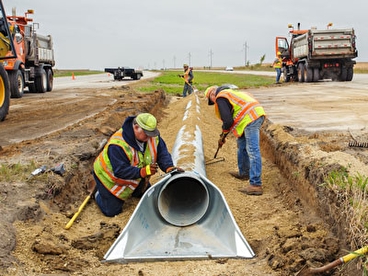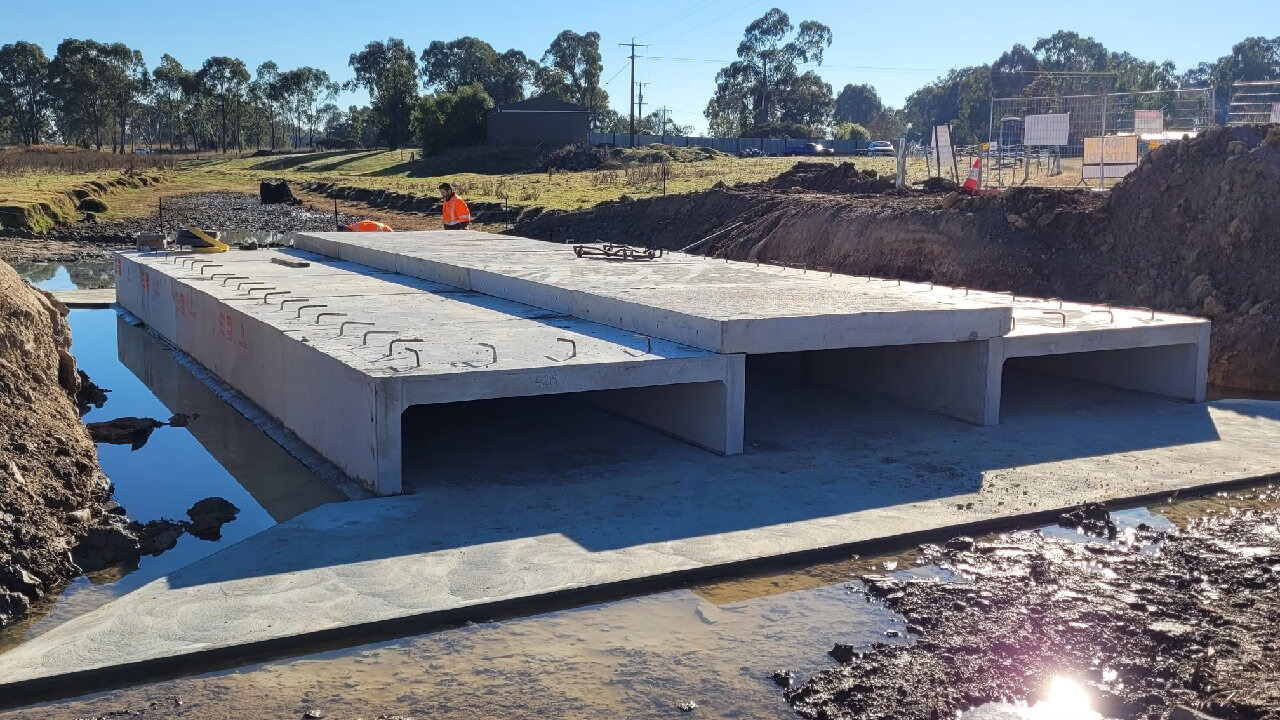Culvert Setup Made Easy: Step-by-Step Overview for Success
Mounting culverts may feel like an uncomplicated job, yet making sure an effective outcome calls for mindful preparation and execution. From selecting the proper culvert dimension to incorporating correct water drainage measures, each action in the installation procedure plays a vital role in the performance and durability of the culvert system. By following a systematic method and taking note of crucial information, the installment can proceed smoothly, decreasing prospective concerns down the line. Remain tuned to reveal the vital actions and considerations that can make culvert installment a smooth and effective undertaking.
Selecting the Right Culvert Size
Choosing the suitable culvert dimension is essential for making sure effective water circulation and architectural stability in culvert installment tasks - Pad Construction. The size of the culvert directly influences the flow capability of water through the structure. A culvert that is too tiny can lead to flooding and overflow, while one that is as well huge might lead to reduced water speed, potentially triggering sediment accumulation and blockages
To figure out the right culvert size, aspects such as the watershed area, peak flow rates, and hydraulic efficiency need to be thoroughly considered. Estimations based on these parameters assist in choosing a size that can effectively take care of the predicted water quantity while lessening the danger of blockages and structural failing.
It is important to consult engineering guidelines and criteria to make certain that the chosen culvert size fulfills the project requirements and local policies (Pad Construction). By selecting the ideal culvert dimension, project supervisors can optimize water circulation, protect against potential concerns, and improve the overall effectiveness and durability of the culvert installation
Preparing the Setup Website
Reliable culvert installment requires thorough prep work of the setup website to make sure optimal structural assistance and functionality. Before starting the setup procedure, it is critical to get rid of the website of any particles, greenery, or blockages that can restrain the culvert's placement.
Furthermore, it is essential to consider variables such as dirt composition, groundwater degrees, and ecological effects when preparing the setup website. Performing a detailed site analysis can assist determine any type of prospective challenges or dangers that may influence the culvert's performance. By taking the time to prepare the installment website appropriately, you can aid assure a successful culvert setup that fulfills architectural demands and ensures long-lasting performance.
Positioning the Culvert Properly

The grade at which the culvert is positioned is important for keeping a proper incline for water circulation. A steady slope assists protect against merging and advertises reliable drain. Additionally, the culvert must be oriented correctly to make sure that the inlet and outlet are in the proper locations. This orientation is essential for the culvert to operate efficiently in handling water circulation.
Backfilling and Compacting the Soil
Proper backfilling and compaction of the soil around the culvert is crucial to make sure stability and protect against prospective issues in the future. Once the culvert is correctly put, the next essential action is to backfill the location around it with suitable material. The backfill Tree removal material ought to be without rocks, particles, and raw material to avoid damages to the culvert. It is suggested to make use of granular material such as sand or crushed rock for backfilling, as it gives great water drainage and compaction homes.
After positioning the backfill product, it is very important to small it in layers of uniform thickness. Making use of a compactor or a mechanical meddle, small the soil carefully to stay clear of harming the culvert. Compaction assists in minimizing the chances of negotiation and makes sure uniform assistance around the culvert. It is crucial to small the dirt uniformly on all sides of the culvert to keep its structural honesty.
Correct backfilling and compaction not just offer security to the culvert but also help in stopping soil erosion and preserving the longevity of the culvert system.
Making Certain Appropriate Drainage Combination
Incorporating reliable drain services plays a critical function in the general functionality and durability of culvert setups. Correct drain combination is vital for handling water circulation, preventing disintegration, and guaranteeing the architectural integrity of the culvert system. To achieve this, it is crucial to make a thorough water drainage strategy that considers variables such as the quantity of water expected, the topography of the area, and the type of dirt existing.

Furthermore, incorporating functions like disintegration control steps, such as riprap or plant life, can better enhance the efficiency of the water drainage system. By carefully intending and carrying out these drainage options, culvert setups can work effectively and hold up against the test of time.
Final Thought
To conclude, appropriate culvert installment is critical for preserving efficient drainage systems. By picking the ideal culvert size, preparing the setup site, positioning the culvert correctly, backfilling and compacting the soil, and ensuring correct drainage combination, success can be attained. Adhering to these steps will help make certain the longevity and effectiveness of the culvert, eventually contributing to the general success of the drainage system.